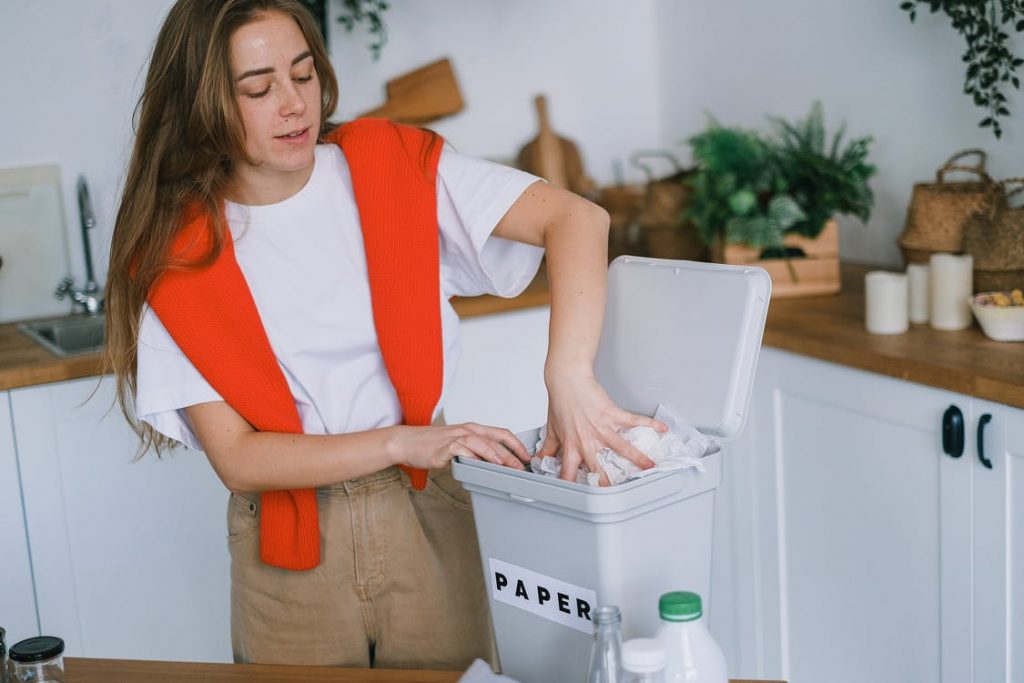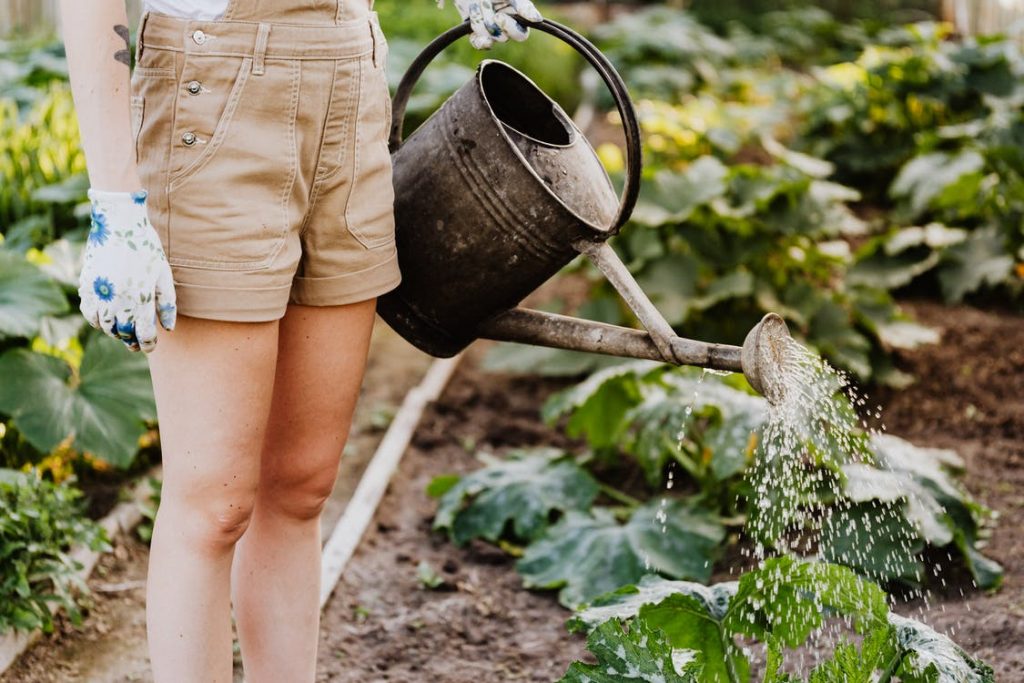Guide to an Eco-friendly Home and Garden: The global conversation surrounding sustainability and eco-friendly living has amped up in recent years. We are all affected by climate change, and there are steps we can all make to move towards a greener, sustainable future outside of pressuring big corporations and governments to change their ways. An impressive 1/3 people reportedly became more eco-friendly over the Covid-19 lockdown, signalling a real willingness to get on board and make small changes which have a big impact.
In this article, we’ll be exploring simple, yet effective features than make up an eco-friendly home, including tips for your garden.
By Ryan Jenkin

Why an eco-friendly home and garden is important
Being eco-friendly is important because we are in the midst of a climate crisis brought on by decades of over-consumption of unrenewable goods, burning fossil fuels, and not taking enough care of our planet. In fact, it’s so bad that the UN have labelled the latest IPCC Climate Report a ‘Code Red for Humanity’. If we work together to make eco-friendly choices, we can positively influence the future of the planet. Making better choices will:
- Save money and energy
- Help to preserve the environment
- Make us healthier
- Improve life quality
- Ensure less waste is produced
What does ‘eco-friendly’ actually mean?
To put it simply, to be eco-friendly is to not be harmful to the environment. When people talk about making eco-friendly choices, they mean making choices which have little to no impact on the environment, in comparison to alternative choices. Some examples of eco-friendly choices include:
- Walking or riding your bike to work instead of driving
- Avoiding disposable, one-use-only products
- Companies choosing bio-degradable packaging over plastic
- Only buying what you will use
- Avoiding ‘fast-fashion’ and mass-produced goods
Changes in your home
The key to running an eco-friendly home is starting small, and gradually working changes into your everyday life. Trying to do everything at once can make it feel overwhelming, and you’ll be less likely to stick at it.
Energy efficient gadgets
We’re lucky enough in the UK to be able to access a huge range of gadgets which are energy efficient and, usually, relatively cost-effective. Switching energy-eating appliances for gadgets that run more efficiently is great for reducing your overall electricity usage as well as being kinder to your wallet.
- Use smart plugs to time appliances
- Invest in a smart thermostat to keep heating usage down
- Switch out old lightbulbs for LED, or energy-saving, bulbs
- Change your shower head for an ‘eco’ showerhead, which will use less water and less energy
Re-use and recycle
Recycling has been promoted for a long time now, and in most cases, there’s no excuse not to be using your recycling bin. As well as recycling plastic, cardboard, and tins, think about what could be re-used before it goes in the bin. Old clothes which aren’t fit for charity could be cut up and used as cleaning rags, and your used yoghurt pots will make excellent pots for starting seedlings if you have a garden. Think outside the box and get creative.
Also remember that one mans trash is another man’s treasure – check out freecycling sites such as freecycle.org and your local Facebook groups to see if anyone wants your item before you bin it.
Switch your cleaning products
Cleaning products tend to contain harsh chemicals which can harm the environment. The products are washed away over time or poured down your drain, and they end up lingering in our waterways. There are plenty of eco-friendly alternatives popping up which are just as effective without being harmful. You can even get environmentally friendlier brands like Ecover and Method in supermarkets.
Check your hygiene products, too! Some toothpastes contain ‘microbeads’ which are made with microplastics – tiny bits of plastic which land in and pollute water. These are nearly impossible to remove once they are there.
Find a local re-fill shop
Have you ever heard of a re-fill shop? They represent a move back to the ‘good old days’, with shops full of open containers, scoops, paper bags and weighing-scales. In a re-fill shop, you take your own containers and weigh out and pay for what you need. They usually have a massive range of goods, including groceries, cleaning products and much more. Some supermarket chains have started dipping their toe into the world of re-fills, so hopefully it will become more accessible in the near future.
Changes in the garden

If you are one of the 7 of 8 British households with access to a garden, you should take full advantage of your green space! These are our tips for how you can run an eco-friendly garden and use it to live a sustainable life.
Say no to pesticides
Toxic pesticides that are used to keep insects from eating plants are not good for the planet. They leech into the soil and eventually end up being ingested by humans. There are plenty of nature first alternatives to pesticides which will keep pests away without doing any harm to the environment. Companion planting, introducing natural predators, and nematodes are all great tools for any gardener to have in their arsenal.
Choose sustainable garden furniture
Choosing sustainable, long-lasting furniture is just one thing you can do to reduce your impact on the planet. Where possible, opt for natural materials like wood, and only choose suppliers who source their materials sustainably. This furniture can be more expensive but is a longer-term investment that will last longer than cheaper plastic alternatives. If you don’t mind a more rustic look, you could even consider creating your own garden furniture with used pallets.
Help local wildlife
Helping your local badgers, birds and bees is a great way to give back to the planet, and it will make your garden a little more interesting too. Create a diverse ecosystem for the animals in your garden and leave out food for birds during colder weather. Look into which flowers attract bees and butterflies and create a wildflower haven for them on an unused patch of land.
Composting
Starting your own compost heap is an excellent way to dispose of a lot of food waste whilst creating fantastic, nutrient rich food for your plants. Compost heaps are relatively easy to DIY and require little maintenance.
Grow your own fruit and veg
The best way to reduce your usage of single use plastics and packaging material is to stop buying your fruits and vegetables from supermarkets. Shopping at farmers markets and greengrocers is one way to get around it but growing your own crops will have the biggest impact. If you have the space, consider setting up a small vegetable patch. Once you’re up and growing, this will massively offset your carbon footprint.
Author bio
With 25+ years of gardening experience, Sefton Meadow’s resident author Ryan Jenkins has a wealth of sowing, growing, and harvesting knowledge to share.